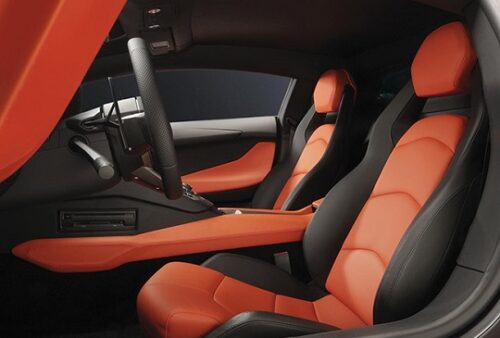28 Oct 2022
Mike Redwood reviews some of the ongoing issues in the automotive industry and why now is the time to fight for the use of leather. Published by ILM.

I like cars. You may not think it from the fact that, in our family, we have a 19-year-old petrol VW we brought back from the Netherlands near the start of the century, and a six-year-old diesel Volvo that needs another few years of ownership before the leather upholstery matures to its full beauty.
Environmental considerations make me think that keeping these while they are running well is better than getting new vehicles, as I used to do when working full-time.
For the past 50 years, while automotive leather tanners have been watching consumers worry their way through this kind of thinking, they enjoyed steady and profitable growth to become perhaps the most prominent sector in the leather industry.
They have given us some of the best large modern tanneries, with a throughput far closer to the just-in-time flow system that is possible in the footwear sector, and perfectly demonstrates the responsible production of high-quality leather.
They are now having a rollercoaster ride with problems in the supply chain, overall demand and the switch to electric vehicles (EVs), along with a tough battle for market share that was not anticipated just a few years ago.
Semiconductor shortages
Problems came with the pandemic and, like those created during the financial crisis when auto-leather buyers forgot that hides were a by-product that is still produced as long as we eat meat, the first problem was partly self-inflicted.
Canceling orders for semiconductors at the first sign of sales weakness followed by the rush for cars when consumers found traveling alone safer than public transport left them to discover the industry had redirected semiconductor sales to those making laptops for home working. More problems arose with Covid-19 factory closures followed by geopolitical issues, and now semiconductors are central in the U.S.-China technology war.
With what semiconductors they had, they made bigger cars (SUVs) where there was more margin, thus keeping the leather makers busy. Servicing demands were high for tanners as production volumes and locations kept jumping around at the last minute.
Throughout the last three years, the move to EVs in Europe, the U.S. and China has been strong, but the cars are expensive unless heavily subsidised by government incentives. So, ideas for cutting costs were sought. To the fury of the leather industry, many automakers have argued that for “moral”, “ethical” and “environmental” reasons they were going to replace expensive leather with cheaper plastic materials.
Hindsight tells us that the battle for leather should have started earlier but the fight back has been determined and well-orchestrated. It will be difficult for some auto executives to back down when they know they made a false decision based on bad (or zero) science.
A plea for an updated Leather Manifesto for COP27
This fight will run, and we need the whole leather industry involved, hence my plea for an updated Leather Manifesto for COP27. Having done one, and got more organisations involved in its support, we know better where to send it to influence the influencers.
Certainly, leather cannot afford to lose much more market share in the automotive sector. Sales over the next couple of years look pretty flat, with only the EV sector growing. Quite how consumer demand will move as the energy crisis and high inflation continues is uncertain and, although the latest Chinese GDP figures were a little better than expected, the Communist Party meeting was not encouraging for economic growth with the fortress China mentality leading the way.
And “fortress China” means bigger problems for the automotive industry. Two of the top six battery makers are in China and the country has 80% of battery cell manufacturing, 70% of lithium refining and control of cobalt in the Democratic Republic of Congo (DRC) where nearly all of the world’s supply is to be found.
China named lithium as a target in 2015 as part of the Made in China 2025 10-year plan, so they have been out looking to ensure access to the best supplies as well. This means they have been targeting areas such as South America’s lithium triangle that links Argentina, Bolivia and Chile.
We should not forget that Europe’s biggest lithium sources are in Ukraine, something of which Russia is very aware. Europe’s position is worse than the U.S. but the West is clearly late to the party.
The issue here is so great that some automotive companies are looking at swapping batteries or non-ownership models that return the car after a few years to allow the reuse of the rare earth metals they contain. We should expect to see new business models related to both ownership and connectivity with EV vehicles.
The attitudes of the younger generation of buyers have also changed. There is now a different view of brands altogether as there is with the expected omnichannel routes to market. Yet, cars will still be made and sold and leather will be used in many. So, this battle is worth engaging in.
We bring leather, material and fashion businesses together: an opportunity to meet and greet face to face. We bring them from all parts of the world so that they can find fresh partners, discover new customers or suppliers and keep ahead of industry developments.
We organise a number of trade exhibitions which focus on fashion and lifestyle: sectors that are constantly in flux, so visitors and exhibitors alike need to be constantly aware both of the changes around them and those forecast for coming seasons.